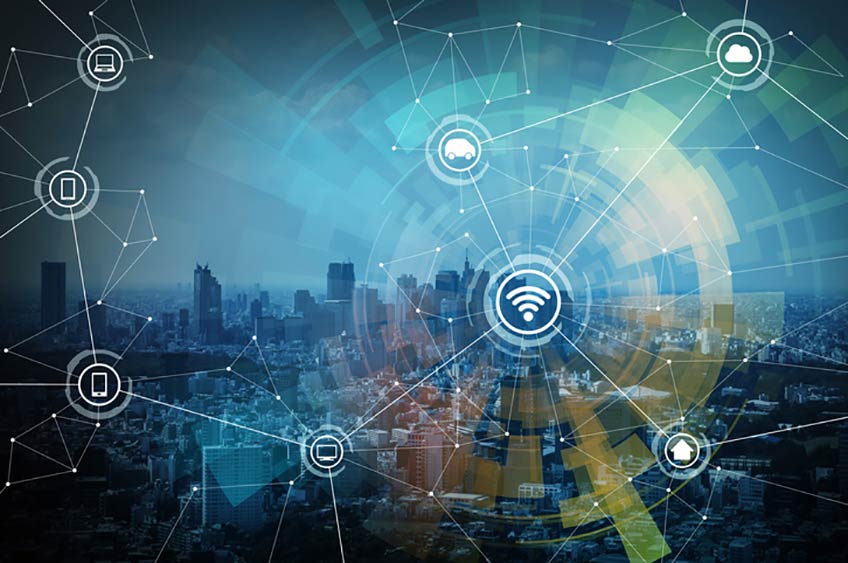NREL Leadership in Grid-Mod Projects Highlights National Progress

The challenge to modernize our grid is not a maintenance task or an everyday repair. The GMLC is responding to a grid transformation unlike anything our nation has experienced. Five key trends are driving the need for a new trajectory in grid modernization: a changing mix of electric generation types and characteristics; increased use of digital and communication technology; growing demands for a more resilient and reliable grid due to severe weather, cyber and physical attacks; opportunities for customers to provide grid services and participate in electricity markets; and an aging power grid infrastructure.
The fact that we’re aware of the challenges, however, puts us halfway there. There’s a lot of opportunity for progress, and the GMLC is taking the right steps toward a national momentum on the issue. As vice-chair of the GMLC, I’m encouraged by the collaboration I’ve seen—13 laboratories, extensive partnerships with industry, state and regional offices, and research institutions—all recognizing the broader impact of their work.
The six NREL-led projects are a cross section of the GMLC work. They show that equal importance must be given to developing technical tools and putting those tools to use. Most of all, they highlight the interdependence of GMLC projects; every insight gained is an asset toward a secure and resilient national grid.
—Juan Torres, vice-chair of the GMLC and associate laboratory director, ESI
One strength of the GMLC is that each project under the GMLC program contains lessons that are important outside of their respective scope. For example, one of the six projects that NREL led has a direct focus on Alaska but relevance to a much broader market. Project 1.3.21 — Alaska Microgrid Partnership is an effort to improve the state’s approximately 200 isolated microgrid systems, which depend almost exclusively on imported diesel. The mostly native population that the microgrids serve will see their fuel costs decrease in place of expensive upgrades to the power system, with results that will be shared by similar communities in the Arctic.
Like in Alaska, one Hawaii-based GMLC study reaches well beyond its geographic boundaries. NREL led 1.3.29 — Grid Frequency Support from Distributed Inverter-Based Resources in Hawaii, a project that charted the course for many more grids to follow. Customers continue to drive the push for more solar photovoltaic (PV), leaving states with high PV penetrations like Hawaii wondering how to manage the devices’ new frequency dynamics. Seven IEEE papers and many technical reports later, this GMLC project has helped Hawaii welcome inverters that can help stabilize frequency at a subsecond timescale. The work will empower other utilities facing similar challenges with PV, and it had an impact on another GMLC project that NREL leads.
Project 1.4.1 — Standards and Test Procedures for Interconnection and Interoperability is a foundational project for grid modernization. It concerns the urgent and broad need to develop technological standards. Research like Hawaii’s reveals gaps and overlaps for emerging technology standards, providing a case study around the interconnection and interoperability of new grid devices. Ultimately, better harmonized standards will make it easier to deploy more smart devices without putting the electric grid at risk.
Another project with broad and long-term goals is 1.4.25 — Distribution System Decision Support Tool Development and Application. This project complements 1.4.1 by providing technical assistance and education around upcoming grid technologies. The Institute of Electrical and Electronics Engineers (IEEE) Standard 1547, for example, is relevant to any state hoping to accommodate distributed energy resources, but states could use a hand incorporating the dense new requirements into regulatory documents.
Other GMLC projects have a large and narrow focus. Project 1.3.33 — Midwest Regional Partnership and Interconnection SEAMS Study fits this category. The Interconnections Seam Study examines how the Eastern Interconnection and Western Interconnection can exchange energy with high-voltage DC transmission. Iowa State University helped model the integration, as did NREL as the lead on another project, 1.4.26 — Development and Deployment of Multi-Scale Production Cost Models.
Production cost models are planning tools that simulate operations. They are used to analyze future power system scenarios, but opportunity exists for improving the fidelity and efficiency of these models. This project identifies these opportunities and develops faster, more realistic models for use by industry and independent service operators.
The GMLC is a strategic partnership between DOE and the national laboratories to bring together experts, technologies, and resources to collaborate on the goal of modernizing the nation’s electric grid. GMLC is a major part of DOE’s larger Grid Modernization Initiative (GMI). The GMI represents a comprehensive DOE and partner collaboration, which accelerates the development of technology, modeling analysis, tools, and frameworks to help enable grid modernization adoption.

